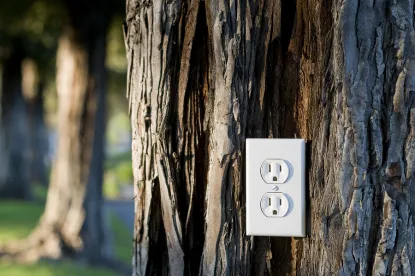The Act of 11 January 2018 on Electromobility and Alternative Fuels will come into force on 22 February this year. It establishes a system of incentives for the promotion of the use of vehicles powered by alternative fuels, mainly electricity, and also introduces mechanisms for initiating investments in the necessary infrastructure.
The Act introduces into Polish law the requirements of Directive 2014/94/EU of 22 October 2014 on the deployment of alternative fuels’ infrastructure. EU Member States are to ensure that by 31 December 2020 an appropriate number of publicly available recharging points will have been created to allow electrically powered vehicles to travel at least in urban/suburban agglomerations and other densely populated areas.
Under the new regulations, the sale within the meaning of the Energy Law does not include electric charging at charging points. This means that the charging service providers will not have to hold a concession for electricity trading. The construction of a charging station will therefore be possible without a building permit. Just as the construction of interconnections, it will only require the preparation of location plan on a copy of the current basic map or a notification to the architectural and construction administration authority.
In terms of interconnecting publicly accessible charging stations to the grid, specific regulations regarding the interconnection fee have been introduced. With regard to stations connected to a network with a rated voltage of more than 1 kV but not exceeding 110 kV, the interconnection fee will only amount to 1/16 of the actual expenditure incurred for the interconnection. In case of rated voltage lower or equal to 1 kV, it will be a fee based on the rates of charges included in the tariff, calculated on the basis of 1/16 of the average annual investment expenditure for the construction of network sections used for the interconnection.
Municipalities are required to locate a minimum number of publicly accessible charging stations by 31 December 2020. The target number of stations depends on the number of inhabitants of the commune, the number of vehicles registered in it and the number of vehicles per 1000 inhabitants. If the indicated levels are not achieved, the municipalities will, as a rule, be required to draw up a plan for the construction of generally accessible charging stations. A plan will be agreed with the relevant distribution system operators. They will also be required to build the stations indicated in the plan. Operators of stations constructed within this procedure and charging service providers will be appointed by the President of the Energy Regulatory Office. After a year, distribution system operators who have built stations will be required to conduct proceedings aimed at selecting an operator under the provisions of concessions for construction works or services.
A system of incentives promoting the purchase of electric vehicles has also been introduced. The value of amortization write-offs in the case of electric vehicles that can be settled as a deductible cost in PIT and CIT is increased (up to 30,000 euros). Electric vehicles and hydrogen powered vehicles are also exempted from excise duty. Public administration should set an example in the use of electric vehicles. The supreme and central state authorities are obliged to reach a 50% share of electric vehicles in fleets serving their offices. In relation to local government units, with the exception of municipalities and counties whose population does not exceed 50,000, this rate is at least 30%. From 1 January 2020, these indicators must be at a level of 10%, both for supreme and central authorities as well as local government units.



 />i
/>i

